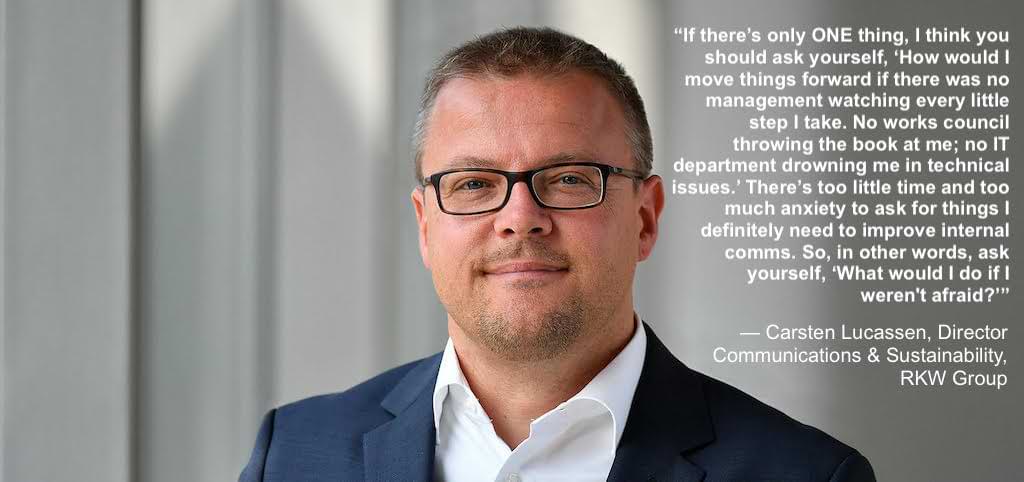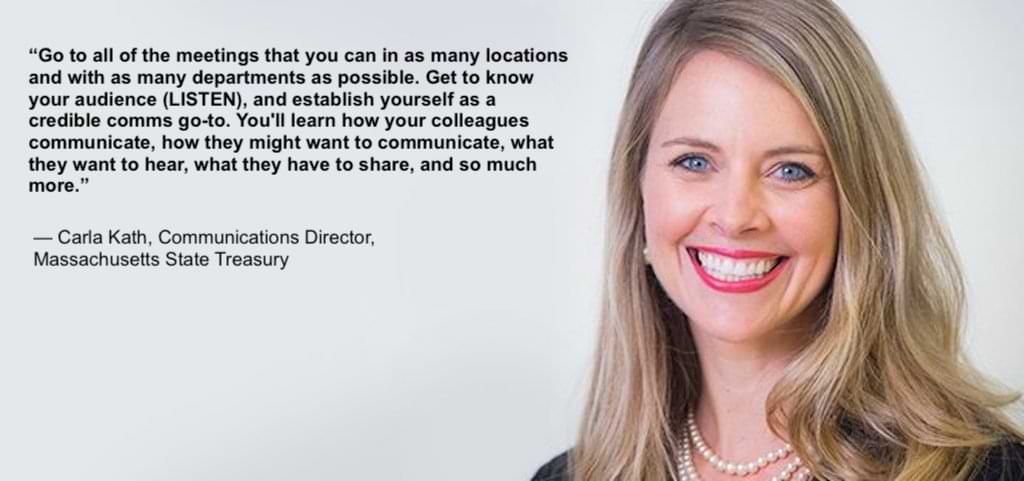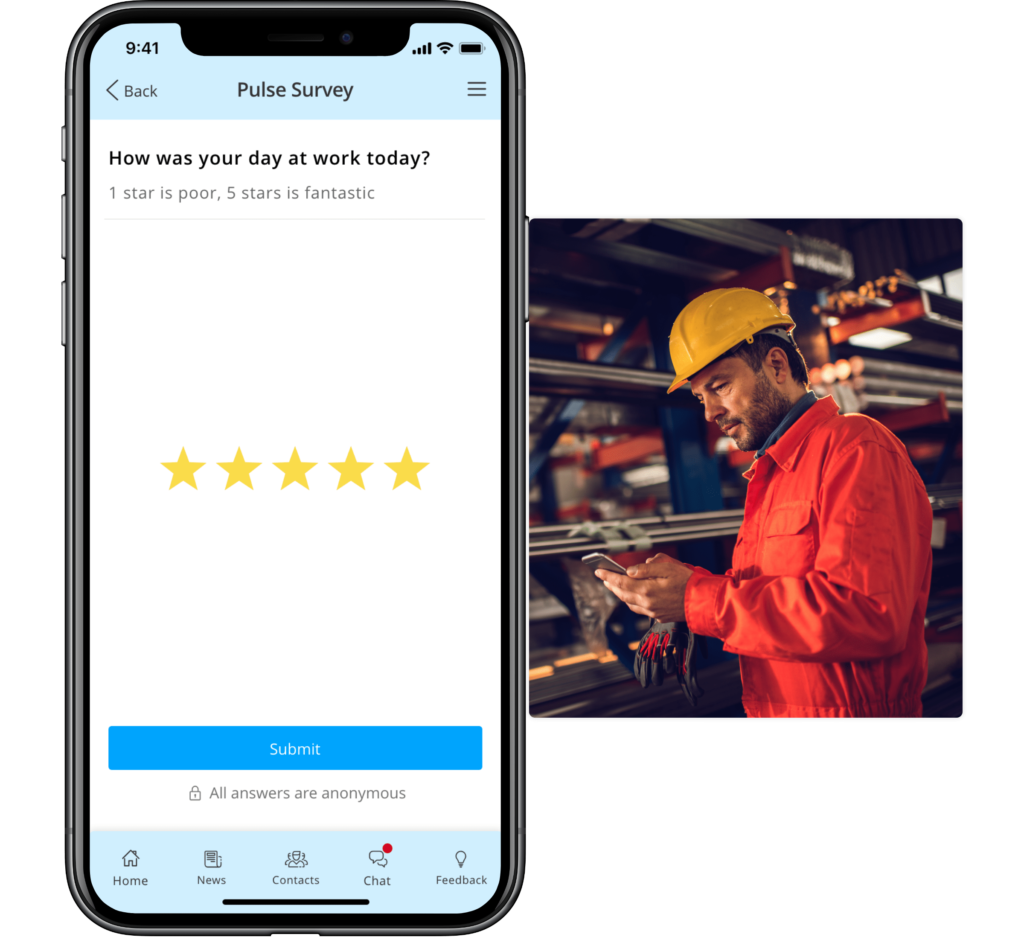10 Easy Ways to Improve Internal Communication Starting Now

Effective communication is crucial to the success and happiness of every kind of relationship. In the workplace, a robust internal communication strategy often speaks volumes about the health of the organization itself. And yet, finding ways to improve internal communication is often seen as a low business priority. Although the importance of IC has reportedly grown since 2020, the State of the Sector on Internal Communication reports that “the number of dedicated internal communicators within organizations is pretty much the same — apart from a slight decrease in enterprise-level businesses.”
It seems possible that too many US companies view employee communication as an expense rather than a revenue driver. But this viewpoint can and ultimately will have dire consequences on all sorts of employee-related factors. And that goes double in our rapidly changing post-pandemic work environment. Sound communication practices directly affect employee retention and engagement, not to mention your bottom line.
Luckily, there are an increasing number of ways to improve your internal communication starting right now. Here are ten useful practices that we’ve seen in action from excellent internal communicators and adopted for our own use. (We’re sure you have some great ideas of your own. Please share them in the comments section below).
1. Take a Look at Yourself
Everyone wants open and communicative colleagues, but what about your own communication skills? Most people probably realize that they could do a better job of sharing ideas and information with others. That’s why examining your personal approach to communication is a great place to start. Perhaps you could consider taking a class on communications — local universities might even offer free programs. But especially for those of you in leadership positions, it’s important to be as communicative as you expect your people to be.
 If you take a close look at your own communication skills, you might be surprised by what you see.
If you take a close look at your own communication skills, you might be surprised by what you see.
Martin Böhringer, CEO of Staffbase, believes it’s crucial for leadership to establish the tone for a culture of open internal comms in order to set a standard for all the other ways a company communicates. But whether you’re in the corner office or sitting behind the receptionist’s desk, if you start by evaluating your own communication skills and do your best to practice what you preach, your colleagues will be all the more likely to follow your lead. Just remember, great communication starts with you.
2. Get Out There and Ask Questions
How do your people like to communicate? No two people are alike and not everyone prefers to send and receive information in the same way. Do your employees prefer to communicate on their smartphones? (I think we can guess the answer to that already. But older workers might still prefer more traditional methods like email.) Via surveys or newsletters? Face-to-face?
This kind of knowledge can greatly help you devise a more effective plan for regular workplace communication. It will allow you to keep the right target audience and listeners in mind depending on your message.
You might also ask your coworkers for their thoughts on how both you and your organization could improve communications. Gathering this sort of information doesn’t necessarily require a formal survey (although those work, too). Rather, just start asking around. Reaching out in person to your people to discover their particular needs — especially now that many are returning to the office — will also demonstrate that you value their input and are willing to act on it. That’s always a plus for employee morale.
Once you know your employees’ preferred channels, you’ll be able to find the ones that best fit your content. Do your best to come up with unusual ways to improve internal communication; for example, by giving executives, experts, or local influencers a chance to share their unique points of view. And let all of your people in on the fun. Everyone has a story to tell.
What’s the #1 thing you can do to improve internal communication in your organization starting right now?
 Be Brave!
Be Brave!
 Get Involved!
Get Involved!
3. Think about How Well Your Organization Communicates
You won’t be able to improve internal communication if you don’t first identify the cause of your problems. Ask yourself: Do I even know how many channels my organization is using?
Communication methods such as email, team chats, video conferencing platforms, and even that old standby the telephone all have their particular pros and cons. But some are likely to be more efficient than others. Email, for instance, might not be the best way to have a conversation with someone. That’s why some companies are starting to favor social intranet software and collaboration tools.
Make a list of your current internal communication tools, and do an honest evaluation regarding which ones you think are working and which ones might need to be replaced or updated. (Obviously this job will be made easier if you utilize tools that provide measurable data.)
When you do make changes, look for tools that allow you to be as varied as possible in your communication methods and make it easy to experiment with different formats: interviews, debates, journalism, commentary, infographics, comics, videos, podcasts, webinars, press releases, etc. The sky’s the limit!
4. Rearrange Your Office
If you work in a traditional workspace alongside your colleagues (and that’s a big “if” since fewer and fewer people do), one of the best and most obvious steps to improve internal communication is to think about your floor plan.
Cubicles and partitions can serve to enhance peace and quiet, but they can also isolate employees and block effective communication. If you think this might be the case, try rearranging your office configuration to make it more “open.” Doing so could serve to facilitate employee interaction and collaboration, not to mention making your office a more pleasant environment overall.
You might also think about letting your people switch desks from time to time depending on their current projects or collaborations, or to simply gain new perspectives, both literally and figuratively.
 “Free your mind.” [The Matrix (1999) Photo Credit: Warner Bros. Pictures]
“Free your mind.” [The Matrix (1999) Photo Credit: Warner Bros. Pictures]
5. Keep Your Door Open and Schedule Time to Talk
Having an “open door” policy that encourages your employees to feel comfortable bringing issues to your attention whenever necessary can be immensely beneficial to your organization’s internal communication. It can motivate your employees while simultaneously making you more approachable.
That being said, don’t be shy about inviting people to cross the threshold. And should your door be open wide and still there’s no one walking through it, set a positive example by getting up from your desk and making your own rounds. Remember the biggest takeaway here: good communication starts with you.
Another tactic is scheduled communication, which can empower your employees, build bonds of trust, and bolster a culture of open communication throughout your whole organization. Make time to meet with your people as often as you feel necessary, inviting them to discuss their thoughts on projects, tasks, and your organization as a whole. And if your company is dispersed across different locations, a regular digital town hall might be a great way to keep in touch.
For managers, standup meetings are also a great option and can serve a practical purpose: The more you can do to remind your team members about the current status of their tasks, the better. Daily standups can be held either in person or via video conferencing, and they don’t have to last for longer than ten minutes.
If you’re lucky enough to have everyone on your team located in one time zone, try scheduling your meetings at the same time every day — ideally at the beginning or the end of working hours. And if your people are spread throughout the world, obviously try to find a time that works for everyone. (Just not on Friday afternoons, thank you very much.)
6. Encourage Water-Cooler Talk
For some managers and CEOs, water cooler chat among employees can seem like slacking. After all, “Time is money,” right? But as a communicator, it’s likely you already realize that it’s impossible to expect your people to really build productive bonds if all they’re talking about is work.
Make a case for employee mingling as an essential aspect of relationship-building. If your employees want to have non-work related conversations or debates during the workday, they should be allowed to do so — within reason.
One big benefit of informal communication is that lively internal communications topics and content can stem from it. Your most engaging content often comes from beyond the confines of your organization: Is there an issue in society or business about which everyone is currently talking? With a little bit of research you can probably relate such matters to your internal audience.

7. Discourage One-Way Communication

Many businesses take a cascading approach to communication, which has long been the standard way to share information. And it’s not hard to understand why: top-down communication contains an element of control that makes it attractive to those responsible for shaping corporate narratives.
But one-way communication only tells half of the story. The fact is, finding ways to facilitate two-way conversations, be they in-person or via technological means, is a much greater way to ensure that a wide array of voices in your company get heard. You might be pleasantly surprised by what you hear — or you might not. But either way, it will certainly be a more authentic representation of your company’s true voice.
 Employee Pulse Survey
Employee Pulse Survey
8. Use an Anonymous “Suggestion Box”
As old-school as it may sound, this is yet another great way to quickly and easily improve communication at work. People aren’t always comfortable bringing up their concerns publicly, which is why taking an anonymous approach might be just the thing to facilitate honest and open feedback. All you need is a box, a pad of paper, and a pen. Of course, you can also direct your employees to a virtual version, which will serve the same purpose. And with a tool like an employee app, putting one in place can be just as easy.
Chances are, it’s going to take a bit of time to really get your people into the idea of making suggestions. But don’t give up. If suggestions are slow in coming, have your team leader encourage their teammates and maybe even break the ice by suggesting changes themself. (“I suggest we all use the suggestion box!”) The bottom line is that once you manage to elicit regular feedback and honest evaluation, acting on it will lead to continuous improvement.
9. Take Advantage of Social Media
Social media has emerged as a powerful and effective way for businesses to communicate with customers, yet what often goes overlooked is how effective it can be as a way to improve internal communication. Does your company have a facebook page? A Twitter account? Are you on Instagram? With social media, employees can like, comment, and share interesting information that relates to your organization.
If your company has a mobile intranet, chances are you’re already allowing your employees to bring their own devices to work and letting them share their work-related interests with one another just as they do in their non-working lives.
When he was corporate communications manager at Smiths Group, the British multinational engineering business, Jonny Wing says that implementing a social wall increased use of their mobile intranet by 10% in just a single day. It also helped that they made it easier for their employees to sign on to their company Wi-Fi. Approaches like these will go a long way toward creating meaningful conversations at work, while merging relationship-building with your business’s goals and philosophies.
10. Identify a Common Purpose
Every organization has a common purpose, although it’s not always fully articulated. But identifying and clarifying common goals can have a number of benefits. After all, there’s nothing more important to a team than for its members to all be on be the same page. Common purpose is often above and beyond a strict business objective. Think about the mission statement of JetBlue: “To inspire humanity — both in the air and on the ground.” Inspiring humanity! That’s pretty bold!
What’s your company’s mission statement? Do you know it? Do your people? Does your company you even have one? These are important questions to answer. So what are you waiting for?










